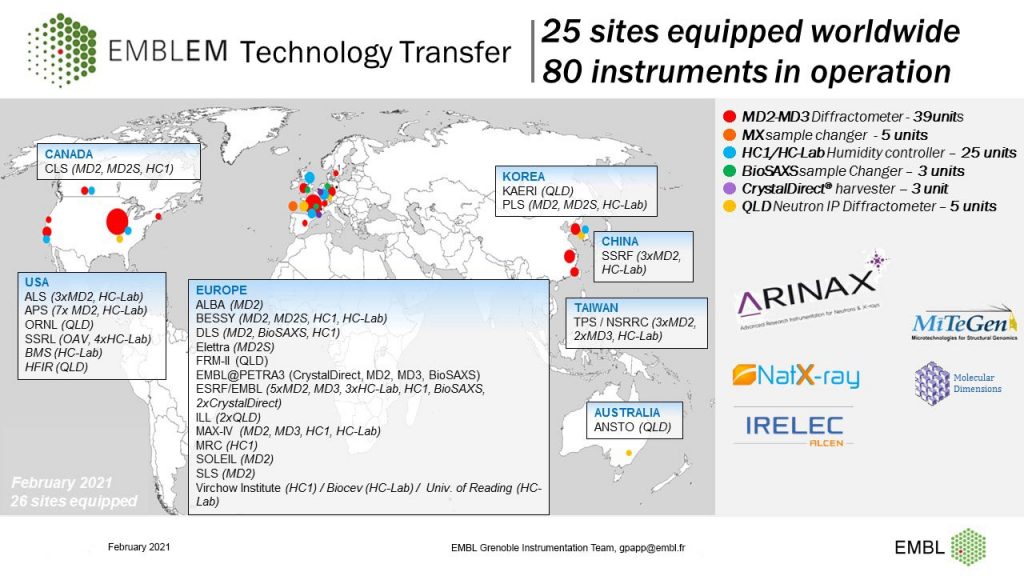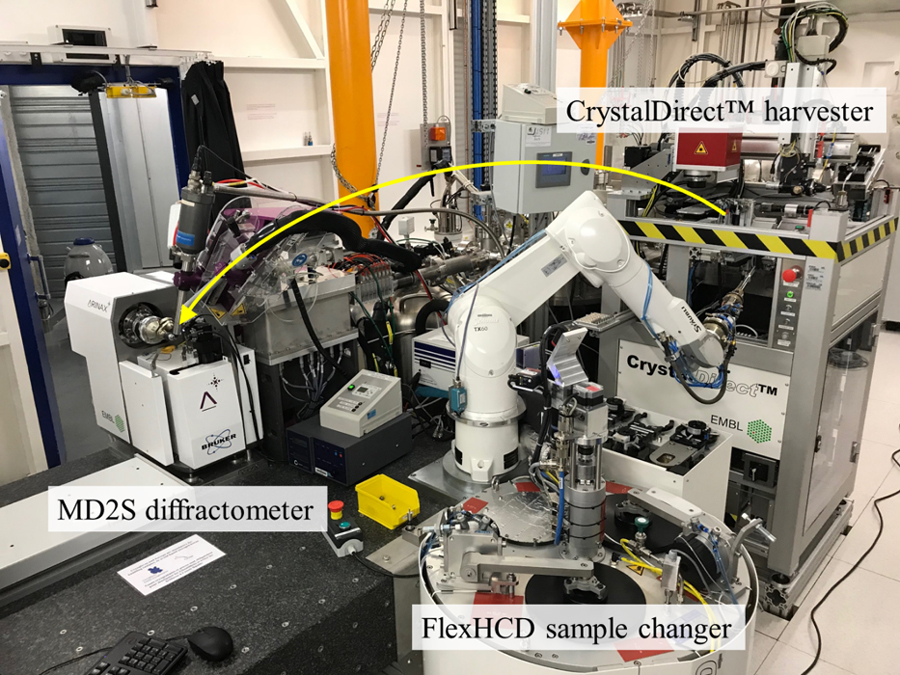
Gergely Papp
Team Leader
gpapp [at] embl.fr
ORCID: 0000-0002-5702-843X
EditRobotics and process development for MX and Cryo-EM

Team Leader
gpapp [at] embl.fr
ORCID: 0000-0002-5702-843X
EditAt EMBL Grenoble, the Papp Team develops instruments for Macromolecular X-ray crystallography, neutron crystallography, Small Angle X-ray Scattering experiments and lately for Cryo-Electron Microscopy, strongly involving the Synchrotron Crystallography team and High Throughput Crystallisation team. Several projects are also developed in collaboration with the ESRF Structural Biology Group, with EMBL@PETRA-III in EMBL Hamburg and with EMBL Imaging Centre in EMBL Heidelberg.
The in-house developed CrystalDirect™ harvesting station is extensively used at the Grenoble HTX lab. With storage capacity extended to several hundred samples, it is ideal for ligand-screening applications. Harvesting at 4°C is now possible with a new harvester installed in January 2021.
In order to shorten the time from crystal harvesting to data collection, and to reduce puck-handling effort, we propose to supply CrystalDirect plates directly to the beamlines. A proof of concept was made at the ESRF beamline ID30B with CrystalDirect-to-beam, a setup in which a CrystalDirect harvester is coupled to the FlexHCD sample changer and MD2S diffractometer (Figure 1). Here, crystals are harvested and directly mounted on the goniometer of the MD2S for data collection, to be processed one by one under user control or in a fully automated pipeline with a pre-defined processing plan. A specific MXPressR workflow was used to retrieve crystals from the harvester instead of the sample changer storage Dewar. An average sample turnover of six minutes was obtained. Data collections have also been operated at room temperature on harvested crystals, using an HC-lab humidity control device, and automated dehydration experiments were successfully performed.
The miniSPINE sample holders and pucks have been finalised, and will soon be commercialised. The MD3up diffractometer developed with Arinax was installed at the ESRF ID23-2 micro-focus beamline, where it is now regularly used for fast mesh and collect protocols. Furthermore, we are developing a new MD3up head dedicated to solid support serial crystallography (SSX) for the future ESRF EBS beamline ID29.
A new ESRF EBS beamline Massif1 will be equipped with a CrystalDirect™-to-Beam setup. In order to shorten crystal-centring times, we plan to use NewPin sample holders. Combined with the intensity of future beams, and the use of fast pixel detectors, the sample turnover time could be reduced to two minutes. We also hope to see miniSPINE become a new sample holder standard. Finally, the growing interest in Cryo-EM makes grid preparation and screening a real bottleneck. This is a new challenge we have started to consider with the Grenoble IBS platform and the Heidelberg Cryo-EM core facility. Within our EasyGrid project we are developing an automated Cryo-EM grid preparation and control machine that enables high reproducibility, multiple samples on the same grid and time resolved experiments. Nanometer scale 2D sample thickness map will be provided with each prepared grid in order to ease the setup of data-collections at Electron-Microscopes.
Supported by EMBLEM, most of our instruments are available to the scientific community worldwide from our partners:


EMBL Grenoble
71 avenue des Martyrs
CS 90181
38042 Grenoble Cedex 9
France
Tel: +33 4 76 20 7951
Email: gpapp@embl.fr
Career Accelerator for Research Infrastructure Scientists
The Papp Team is part of the ARISE fellowship programme. To discuss project ideas please contact directly Gergely Papp.